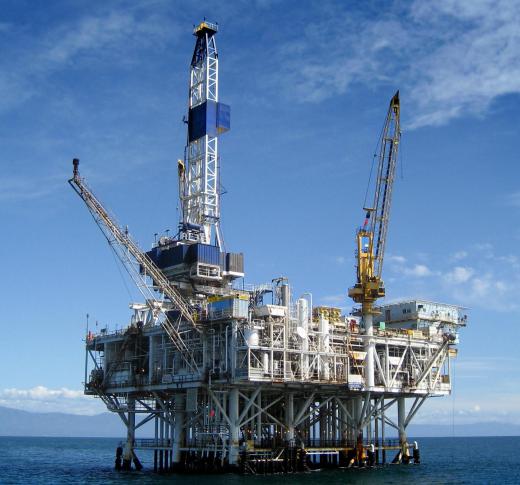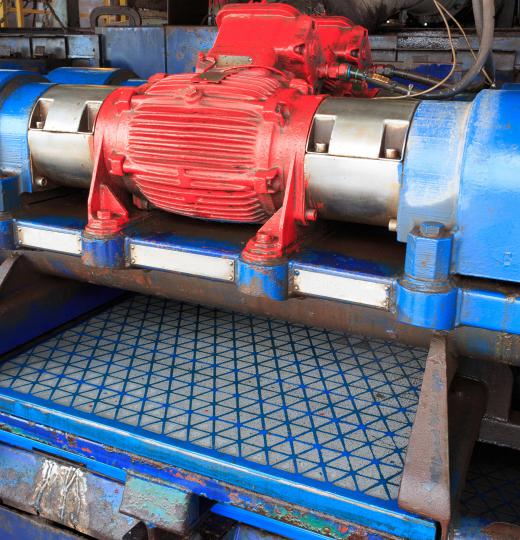What Are Drilling Fluids?
Drilling fluids are liquid or gaseous substances that are often pumped into boreholes during drilling operations. These fluids are typically called drilling mud when liquids are used, though that does not mean they consist of actual mud. Liquid drilling fluids can be either water or oil based, and gaseous fluids often contain air. One main purpose of drilling fluid is to maintain the stability of a borehole, though it can also perform several other tasks. Some other functions include facilitating the removal of drilled material from the borehole, controlling the pressures within a formation, cooling and lubricating the bit, and even transferring hydraulic power to components of the bottom hole assembly.
There are many different kinds of drilling fluids, each of which has qualities that are uniquely suited to particular situations. Most drilling fluids can be broken up into the categories of liquid and gas based. Liquid based fluids are usually called drilling mud, and can be further broken down into water and oil based solutions. Water is sometimes used by itself, though it is more commonly mixed with bentonite clay and various other chemicals. The clay is colloquially referred to as "gel" in the oil and gas industry, and the chemical additives are usually meant to control various characteristics such as viscosity.

Oil-based drilling fluid can be either synthetic or natural, and diesel fuel is one naturally occurring substance that is sometimes used. These fluids are often chosen for applications where greater lubrication qualities are required, or a great deal of heat is likely to be generated in the drilling process. Synthetic oils are usually chosen when the toxic fumes from natural oils could be dangerous, which is often a consideration in the closed working conditions found in offshore oil rigs.

Gaseous drilling fluids sometimes consist of air that is pumped into the drill string, though various other gasses can also be included. Air is sometimes mixed with water as well, which can increase the viscosity of a drilling fluid, provide added dust control, or help clean out the borehole. Polymers are sometimes included in an air/water mixtures when a foaming agent or other additive is required.
The main purpose of a drilling fluid is to maintain the integrity of a borehole, and to prevent the fluids present in rock formations from entering the drill string. Another primary function is to help pass drill cuttings up the borehole to the surface, where they can be disposed of. The fluid is often relied on for cooling and lubrication properties, both to the drill bit and bottom hole assembly machinery such as mud motors. Hydraulic pressure present in the fluid can also be used to power mud motors and other components.
AS FEATURED ON:
AS FEATURED ON:












Discuss this Article
Post your comments